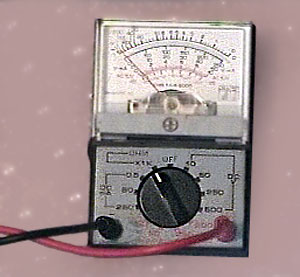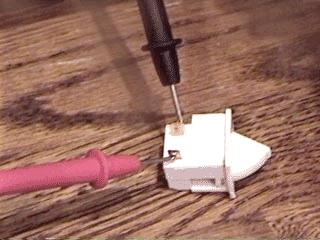How to Use a Multimeter (AKA Multitester)
Continued from page 1
Described below are three common resistance tests; continuity, ground fault and resistance.
Testing for Continuity
This test should be done when current is NOT present. Always unplug the device or turn off the main circuit breaker before attempting a continuity test.
A continuity test is done to determine whether a circuit is open or closed. To test the continuity of a circuit requires the use of a multimeter or multitester.
Set the multimeter to the ohm setting. The symbol for ohm is ![]() , the Greek letter omega. If there is more than one ohm setting, choose X1.
, the Greek letter omega. If there is more than one ohm setting, choose X1.
Note that while the probes are not touching anything, the multimeter will indicate a reading of infinity. A reading of infinity indicates that the circuit is open and cannot conduct current. When you touch the two probes together, the reading changes to zero. A reading of zero indicates that the circuit is closed and can conduct current. Touch each probe to one of the terminals (or poles) of the device. If the reading changes to zero the device has continuity.

To test a switch, place a probe on each pole of the switch. When you move the switch from the off to the on position, the meter reading should change from infinity to zero, which implies that the switch is working. To test a component such as a motor, touch a probe to each pole. A reading of zero indicates that motor has continuity and current can pass through it.

page 2 of 3
| Previous Page |





